Estimated reading time: 8 minutes
Exploring Congo's untamed rainforests is one of the most authentic wilderness experiences we’ve had in a long time. The journey to Odzala National Forest – home to gorillas, elephants and flocks of parrots - is exciting but conveniently straightforward. You fly into Johannesburg, Africa’s international hub, catch a regional flight to Congo’s modern capital, Brazzaville, stay overnight in a luxury hotel, and hop on a charter flight to Odzala the next morning, rested and refreshed. As your charter plane descends out of the tropical cloud cover, you know you’ve found that rare and precious thing in our modern world: a truly wild frontier.
From start to finish, the jungle envelops you in its sounds: the calls of unseen birds, the soft hum of insects, and the whispering of countless leaves. Wrapped in emerald shadows, you glimpse the secret lives of the rainforest’s shy creatures: buffalo, giant hairy hogs, chattering monkeys, elusive chimpanzees and the undeniable superstars - western lowland gorillas.
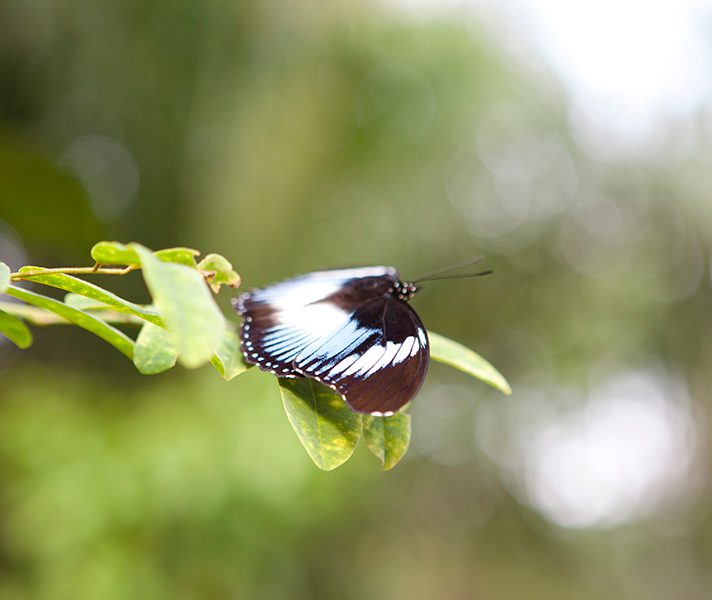
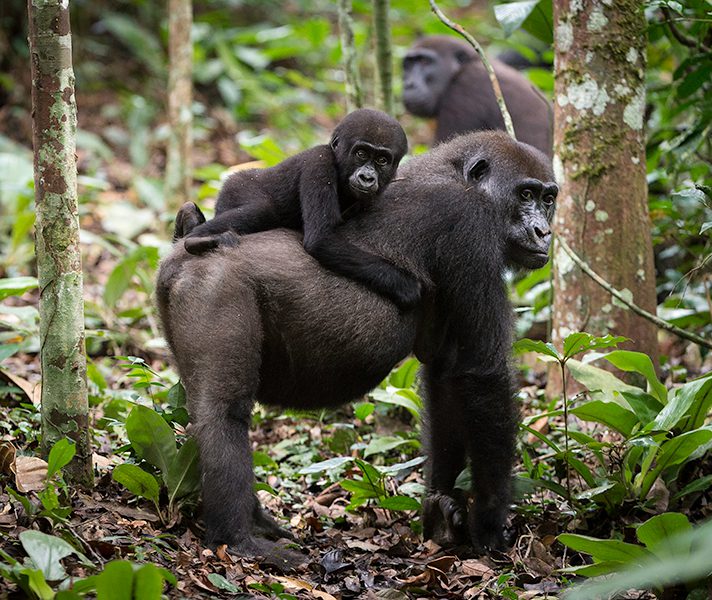
Western lowland gorillas are different from their more famous mountain gorilla cousins, which are found in Rwanda. Physically, they are smaller and less furry, the silverback males have much more ‘silver’ on their backs, and they are more adept tree climbers. They also live in family groups with a single dominant male, and females may leave the group if they think the male has lost his edge as protector and provider – theses ladies are not easy to please, not even when the average silverback sports 200kg of pure muscle!
The gorillas are critically endangered, the nett result of decades of the bush meat trade, trophy hunting, loss of habitat and catching deadly viruses from human contact. Gorillas have no immunity to many of our common ailments but are just as – or even more – susceptible as we are. The common cold and its symptoms are likely to be terminal for a wild animal – being unable to smell danger or react to it quickly, not feeding properly and becoming weakened by fever all adds up to a very vulnerable gorilla. Tragically, catching a cold from a human can wipe out a whole gorilla family, which makes the precautions you take when trekking to see these gorillas that much more essential.
Your guide keeps a minimum distance of about seven metres (22 feet) between you and the gorillas, you wear a face mask to reduce the spread of any airborne germs, and you cannot trek if you are in any way ill – no matter how mild the symptoms may be for you, they could be deadly to the gorillas.
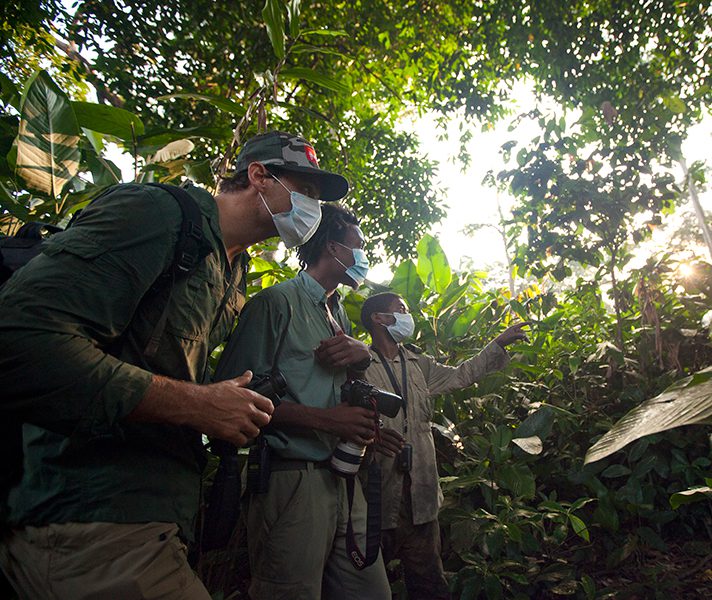
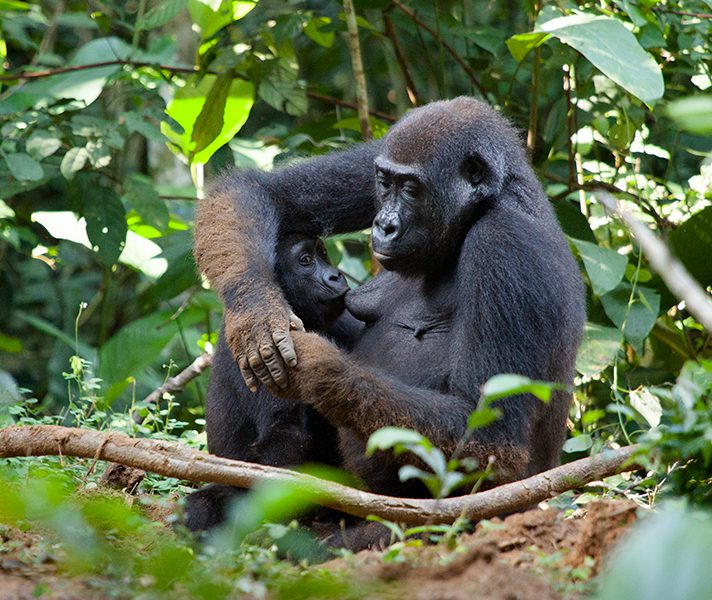
In Rwanda and Uganda, mountain gorillas – cousins to Congo’s western lowland species – have been brought back from the brink of extinction by the tourism trade and are largely protected from any known negative impact by strict trekking protocols. Gorilla trekking provides the revenue that funds protection of the land, research of the species, and jobs for local communities.
Shifting the perception of local communities is absolutely essential to conserving gorillas – when a community views gorillas as being worth much more alive than dead, the gorillas gain their most effective protectors. The remarkable turnaround in East Africa inspires hope for Congo’s gorillas. And it is a rare pleasure to go on an adventure and know, for certain, that your tourist dollar is making a direct contribution to the conservation of the land and its creatures.
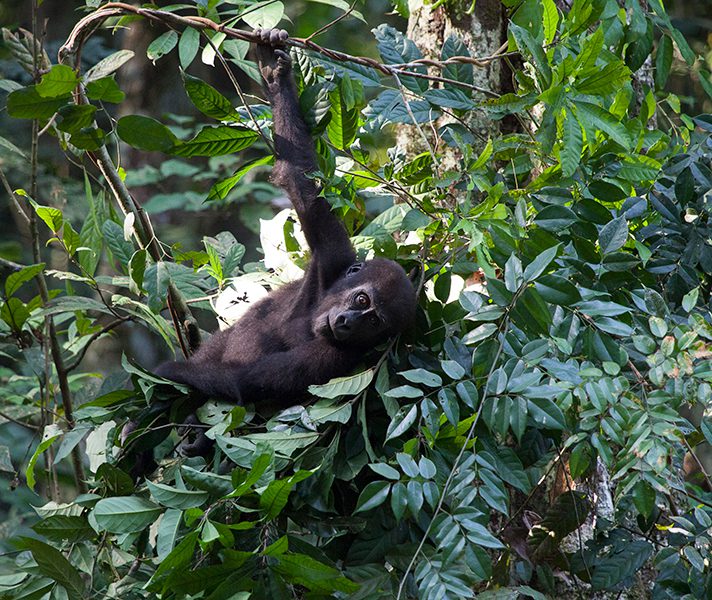
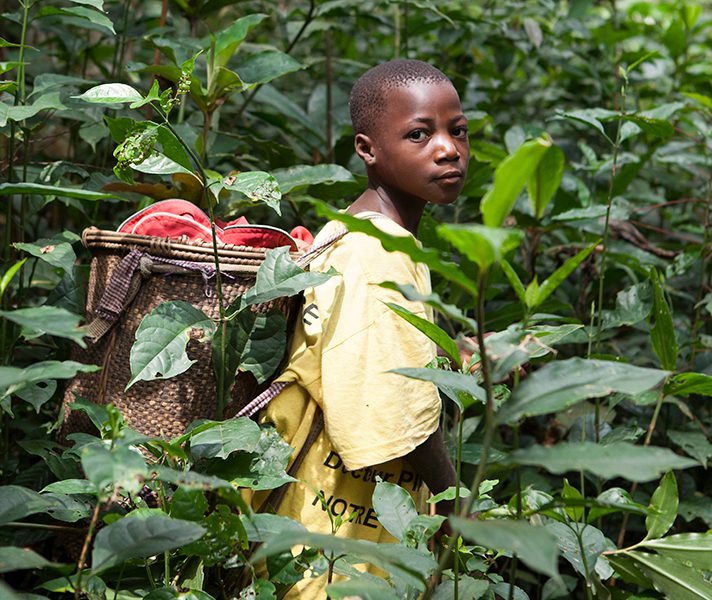
We loved the experience of trekking in Odzala. It requires the same fitness level as a rugged hike; you walk on mostly even paths with regular forays into the undergrowth or scrambles over the odd fallen tree trunk. It was muggy and warm in the forest but not oppressively hot, and we definitely benefited from trekking in June, a relatively dry period. An equatorial climate means there is little variation in the average daytime temperature of 24°C (75°F). Rather than hot or cold, the seasons are characterised as wet or dry. October to December is wet, January to February is dry, March to April is wet, and May to September is dry again.
The forest is filled with sound – monkeys whoop in the canopy, gorillas forage with a steady crunching rhythm, and birds twitter, honk and chatter constantly. It is also full of insects. Aside from wearing plenty of bug repellent under lightweight cargo pants and long-sleeved tops, our guide gave us face nets – a very fine mesh that fits over your head and tucks into your shirt collar (you can see through it comfortably). At first, we thought this was a precaution for overly sensitive travellers but, once the sweat bees found us, we were all sporting our nets in double time! The sweat bees don’t sting or bite, they just want to get at the salty moisture on your skin, and they are far too persistent to be dissuaded with a wave of your hand. But with a head net on, the bees are no problem and the experience actually enriches your adventure – it’s definitely something you’ll tell your friends about when you get home.
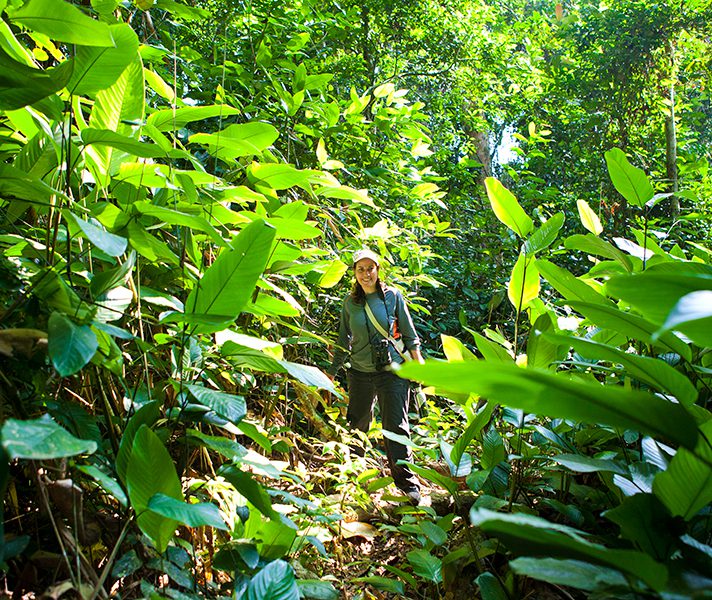
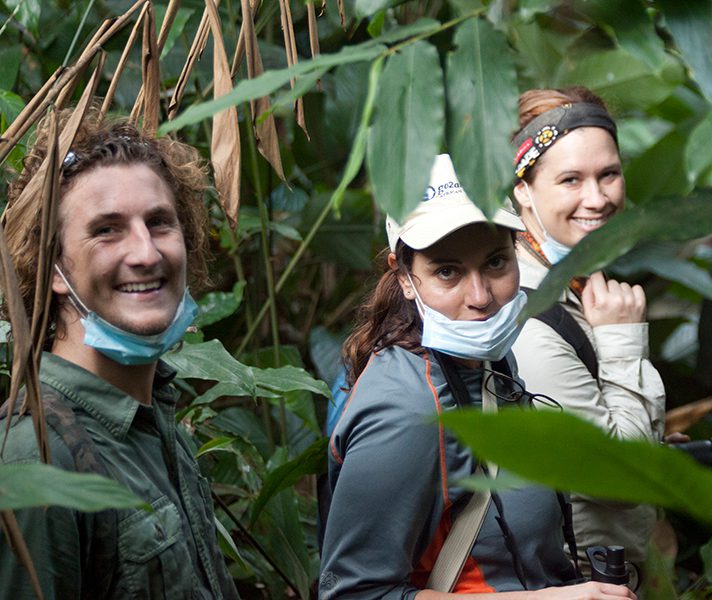
To get the most from a jungle trek, you need good walking shoes (see our Getting Ready blog for what to pack) and an attitude of being open to the experience. Add one of Ngaga Camp‘s superb guides and a professional tracker from the local community, and you’ve got an authentic adventure in an exceptional setting.
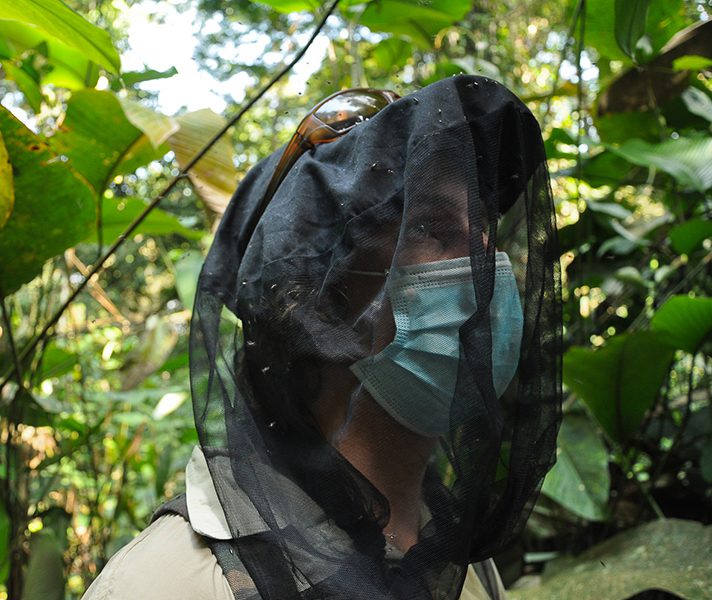
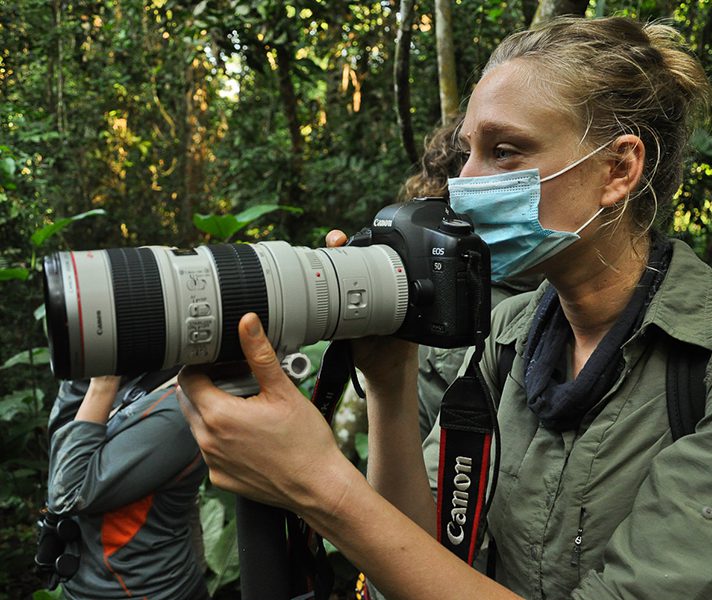
Our 7-night Explore Congo safari features gorilla trekking from Ngaga Camp, set deep in Odzala National Forest. You can expect generous service and warm hospitality with plenty of comfortable luxury. There are only six suites set into the banks of a lush ravine, which makes for a very intimate experience of no more than 12 guests.
Ngaga Camp is also home to the gorilla research team that is actively monitoring and habituating the gorillas in the area. Trekking is the main attraction and we loved the fact that the trek starts directly from camp. You usually have two opportunities to trek plus guided rainforest walks and a night walk near camp to look for rare nocturnal species – we saw a potto, which is best described as a furry, grey-brown, tree-dwelling mammal that looks like a cross between a large galago (or bushbaby) and a small sloth – gorgeous!
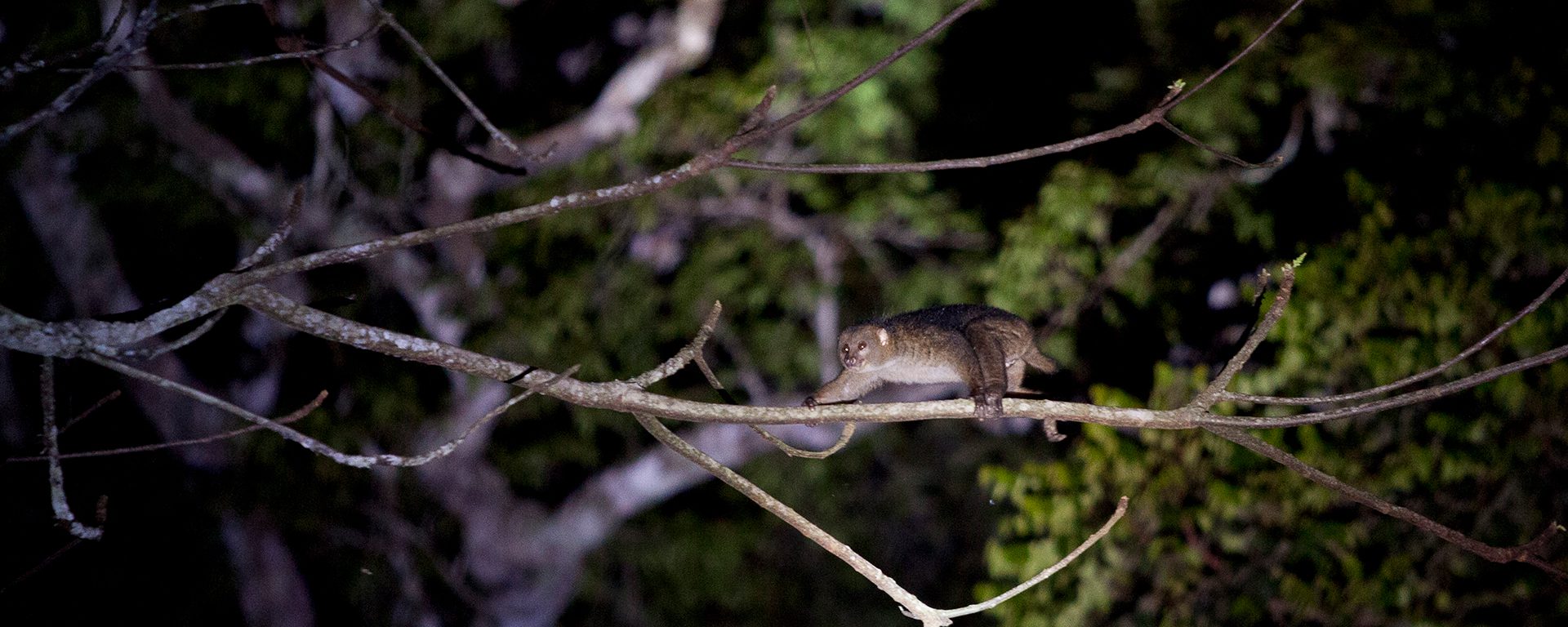
The gorillas are the main attraction and you can expect a truly wild, unscripted encounter that leaves you feeling a sense of awe and a great deal of respect for the researchers who dedicate their lives to protecting the great apes. If you’ve been trekking in Uganda or Rwanda, you’ll find the Congo experience is not as polished or as consistent. You may trek for hours only to find the apes are resting in thick undergrowth, offering you no more than glimpses of them. Or you could have a comfortable walk and come across gorillas feasting on fruit in a sunny clearing, easily visible and displaying all the fascinating behaviour that sets them apart from other primates.
The advantage to a Congo gorilla trek is that your itinerary includes more than one opportunity to see the gorillas and, unlike Uganda and Rwanda, you don’t pay a trekking fee each time: the trek is part of your stay at Ngaga Camp.

